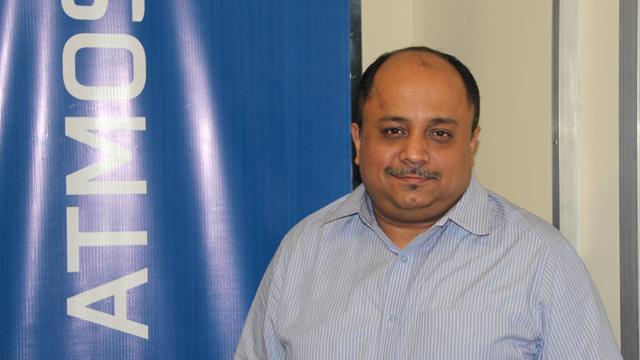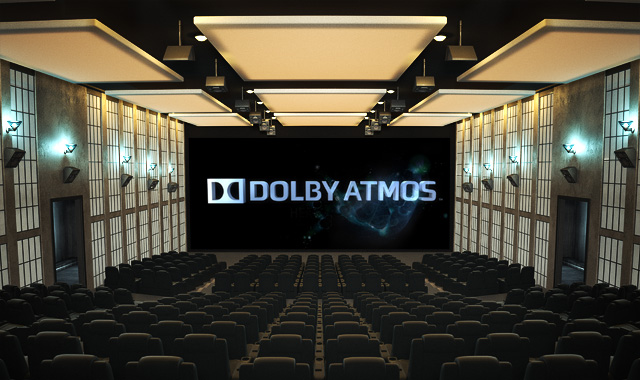With experience spanning over 20 years, Pankaj Kedia has always been involved with the entertainment business. Prior to joining Dolby Laboratories in 2009, he worked at Autodesk for 11 years, where he served as head of the entertainment business for China, India, and Southeast Asia.
He has been part of the media, entertainment and visual computing industry for long now, where he has held various key positions in management, sales, marketing, pre-sales, and solutions integration. He has also been instrumental in supporting the growth and development of the visual effects, DI, digital post production, broadcast graphics, and animation industries in India. His goal is to help establish and grow Dolby’s business across diverse market segments, including cinema, broadcast, PC, mobile, consumer electronics, and gaming.
AnimationXpress.com’s Sidharth Iyer recently met up with the super boss at Dolby India and tried to understand the company’s vision and journey over the past five years of its existence in the sub-continent; associations with various broadcast, cinema & new media partners and really understanding what’s all the fuss about Dolby’s Atmos experience.
Excerpts:-
How has the journey for Dolby been ever since it begun in 1965? And how has the Indian sojourn been for Dolby?
The company was founded nearly 49 years ago and Ray Dolby – the founder of the company – had one clear intention, which was – how to make any kind of entertainment in the highest possible quality for everyone to really experience it. So even if it’s just simply recording media, the reproduction should be such that it sounds as clear as the original, if not better.
So Dolby started out by revolutionising the music industry and there was the big problem of the magnetic hiss at that point of time, when Dolby came up with a magnetic button at that point of time, which made the hissing sound disappear.
Over the years we have only gone onto evolve our technology and revolutionise the way sound is created and experienced. After music, Dolby stepped into the realm of movies and in this space we didn’t only make the sound of cinema better, but also introduced the concept of surround sound. And we didn’t stop there, we also ventured into DVDs, broadcast along with new media, with so many hand-held devices being launched.
Dolby believes in improving the experience for the audience and an improvement in the sensational clarity in that very experience.
Dolby came into the Indian market in the mid 80s and thus has been around for over quarter of a century; we have primarily been catering to the film industry in the early year. In the late 1990s when there was the boom of the multiplex culture and cinema theatres giving more priority to sound, Dolby played an integral role in that transition phase.
And that has really helped us grow as a brand; everyone knows Dolby and relates sound with Dolby. That’s a great advantage for us, being an old and well established brand; and we are here to only help grow the industry along with all the various stakeholders and will continue to do so. As we are not just an add-on feature to our partners, but bring in our expertise and provide that value proposition, which only enhances the overall experience.
… And your personal experience with Dolby?
When Dolby decided to have their office right here in India nearly 5 years ago, I was the first employee and for about six months was just contemplating on how to set-up the business here and what kinds of teams need to be build and what plans need to be in place.
The experience has been really fulfilling, as I look back now. Dolby was only involved in the cinema space earlier, but we have really expanded and grown over the last five years to where we are now; associating with broadcasters, digital media, so we at Dolby really pushed ourselves to deliver the best in technology to our partners and the industry too has supported us along the way. So, it’s been a pleasure in being part of that effort and the journey has been really fulfilling.
How is having a Dolby enabled device any different from other devices?
There was a time when no one really cared what kind of audio one gets with his/her phone, laptop or mp3 player, just because these devices provided the user with the convenience of usage it was a given that sound quality won’t be of a higher quality.
Here is where we came out with the revolutionary idea of bringing about a change in the way things work, the message that we wanted to send out was one could enjoy the convenience of using these devices and still not lose out on the overall experience. At the end, it’s the experience that makes the content more engaging; be it the visual quality or the audio quality.
So with products like the Amazon Kindle Fire we have proved, what can be done with sound if the product is designed in a manner that helps in keeping the essence of the original design; so we are very involved in the complete production and manufacturing of the product.
And we do two things with the device, one is looking at the capabilities of the device, we try and enhance the audio capabilities, like increasing dialogue clarity and the other is looking at enhancing the content in question too; so basically we help them encode the content and in using the Dolby format there are a lot of ancillary benefits and just higher encoding quality.
What has Dolby’s contribution been in the broadcast space?
There are three pieces in the broadcast puzzle, one being the content creation – this is where the broadcaster is really dealing with the complexity of how to create content in the best possible quality; they have their in-house team and then there are the production companies that they are dealing with. So our engagement with them is focused on how to help them in creating the best possible content; the idea is to help the narrative with a superlative audio experience and not taking away anything from the essence of the story.
The second bit of the puzzle is the operators – DTH or the cable operator – the decisions in this space is more centered on the service proposition, whether they will offer HD, Dolby surround or EPG and based on these decisions the set-top boxes are designed. So our job is to educate the operator and tell him what the value addition is that Dolby brings to his/her service and why should they have it in their service.
And the final piece to the puzzle is the end consumer or the playback level; Dolby keeps in mind what is the requirement of the consumer as he/she switches on the television to really experience the movie or television series or the live match. Here is where the consumer needs to be educated that there is a need for a HD TV, HD content, HD set-top box and a home theatre system to really get immersed in the experience.
And I believe in the past three years, since the HD set-top boxes have been made available in the market, the demand has only been steadily rising and with more and more awareness initiatives taken on by the broadcasters, operators as well as the I&B Ministry, the demand will only rise.
And just to put some numbers on the table, out of the 35 odd channels that are available on HD currently, Dolby Surround Sound is available in nearly 24 of those channel, that’s about 75-80 per cent. According to the trend we expect that in the next 2-3 years there would be around 100 HD channels on Indian television and we would love to be on nearly 75-80 of them at that point of time.
So, finally our aim is that when the consumer is watching the HD experience, he/she is watching it with Dolby Surround Sound on the best possible television set, installed with a HD set-top box and really enjoying the entertainment, rather than watching the TV on mute.
Dolby has always been associated with movies, but how’s the traction been with the introduction of Dolby Atmos?
Just to give some perspective, Atmos is what we call a revolution in sound. It’s not just an improvement but a dramatic change from surround sound. There are other companies around that are just enhancing the number of channels with 7.1, 9.1 and 11.1 but our engineers were very clear that is not what Dolby should be looking at doing. For us the bigger picture was more important and thus, with Atmos, we have redefined sound in two ways – one, we have gone from being mere channels to objects; and what Atmos does is to transform the sound into an object.
Now, every speaker is independently wired and every speaker can create a distinct sound. Using out rendered not only can we just produce sound from individual speakers, but we can also move the sound anywhere, on any axis. So what Atmos really does is recreate the reel world into a virtually real world, on the big screen in a dark room.
Just to give you a very valid example, look at ‘Gravity’, there is not much that can be done with sound in space, but the sound design for the movie was such that there were even comments such as watching ‘Gravity’ in Atmos was a way better experience than watching it in IMAX on social media. That is the kind of remark and feedback that we at Dolby strive towards attaining and when our work goes onto be recognised with the film bagging the Oscar for Best Sound Design, it only solidifies the belief that the industry shows in our abilities.
So what can we expect to see from Dolby in the near future?
Our biggest investments are going into product development and technology developments, bringing about new innovations and in fact we work round the clock trying to better the technology and are constantly innovating and re-innovating. We recently launched Dolby Vision, which is the next image format, set to deliver high quality images better than even 4K, there is also Dolby 3D, which will enable the user to view 3D imagery without glasses. There will be many more products on the consumer side and Dolby will no longer be associated with only sound, we want to be looked at as an innovator not only in audio but, beyond.



